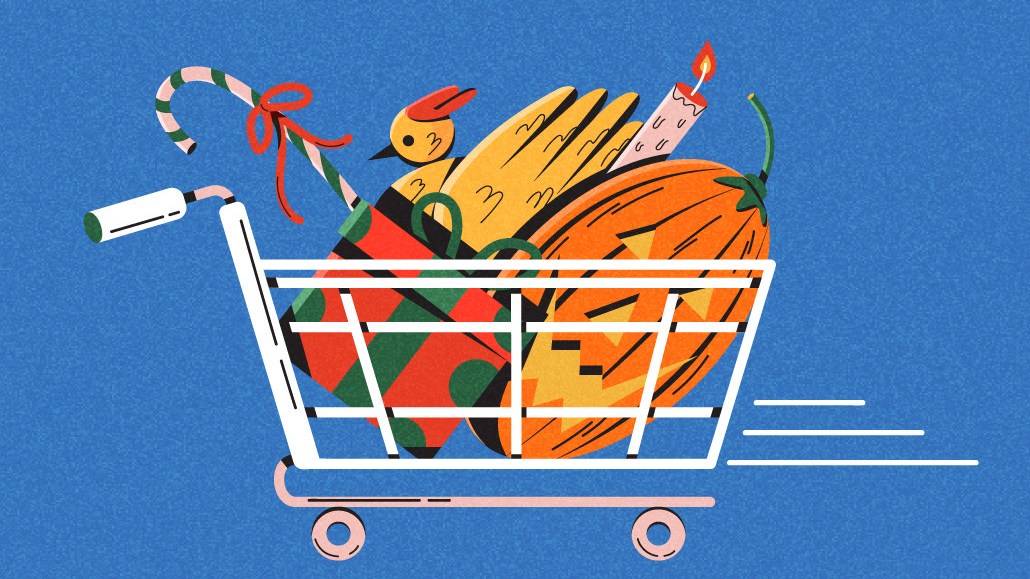By Melissa Daniels • November 13, 2024 •

Ivy Liu
This story originally published on sister site, Modern Retail.
With roughly seven in 10 Therabody customers coming to its website on a mobile phone, the health device company’s digital experience team has been heads down getting ready for the holiday season. Some changes they made this summer in preparation for the holiday shopping season include adding quick-pay options at checkout, as well as putting product video and minimal copy on social ads to repeatedly capture the imagination of shoppers scrolling by.
“We need to think about everything as mobile-first,” said Caitlin Berzok, svp of digital experience at Therabody. “The shopping experience is fragmented into micro-moments over the course of the day or our week; it may take several interactions for a customer to make a purchase decision.”
Therabody is one of many brands prepping for a mobile-first holiday season. Adobe Analytics expects mobile shopping to drive 53% of online holiday spending, an all-time record. That’s up from 51% last year and 40% in 2020, driven by increased mobile usage as well as the popularity of platforms like TikTok. In fact, shoppers have already been increasing their mobile spending all year: Adobe reported a record $280.4 billion spent through mobile devices from January to July this year, a 10.2% year-over-year growth.
In response, brands that are looking to drive sales this holiday season are working to make sure their sites and socials can compete for shoppers’ attention. Berzok at Therabody said the challenge is that people are likely handling more than one task when on their phone. “The millennial mom is the audience we speak to a lot, and she’s juggling 15,000 things in any given day,” she said. “They can shop, message family or check on their children’s [school] updates, all happening in the palm of our hands — and the shopping experience must accommodate this.”
Berzok said her team this year invested in more social ad strategies meant to push consideration. Therabody’s devices range from $149 to as much as $799, meaning the product isn’t necessarily an impulse buy and requires multiple touchpoints and retargeting. This includes showing potential customers videos about how Therabody massage products work and partnering with micro-influencers.
“We’re getting out the jargon and understanding so that if I see this product, I know exactly how the Theragun can integrate with my life,” she said. “It’s about getting the product out there.”
Casey Gannon, vice president of marketing and tech partnerships at checkout company Bold Commerce, said one of the biggest challenges brands face in setting up successful mobile shopping experiences is being able to capture — and maintain — a shopper’s attention. That’s why cart abandonment rates tend to be higher — as much as 89% compared to 60% or 70% on desktop, Gannon said.
“On a desktop, I’ve sat down and looked up an item. You have a lot more of my attention. On mobile, you have to be a lot quicker,” Gannon said.
But once a customer is interested in buying, Gannon said brands that shortcut the checkout experience may see more sales. One strategy Gannon is seeing brands do in response is to share links to pre-loaded carts or the checkout page rather than the product description page. “Every click can lose up to 50% of traffic,” she said.
From there, Gannon said, brands are increasingly looking to have a customer’s payment and shipping information ready to go. Back in September, Bold released an extension to make PayPal’s Fastlane available to companies that use the Magento e-commerce platform. Gannon said this creates an “accelerated checkout” option for brands, as a Fastlane user will automatically have their information recognized at checkout. The update means shoppers can checkout about 32% faster than those without, according to Bold.
“How many brands suffer because they don’t have accelerated checkout or digital wallets?” Gannon said. “One-click, guest checkout options, like Shop Pay and PayPal, reduce friction and improve conversion rates.”
In response, up-and-coming brands are building their entire e-commerce models to cater to mobile.
Barriere, a company that makes vitamin patches that resemble trendy tattoos, built its website on Shopify specifically because of shoppers’ penchant for mobile and the way a shopper’s payment and shipping methods can be saved, said co-founder Cleo Davis-Urman. This month, it’s planning to relaunch its site in mid-November with new mobile optimization in time for the busy holiday shopping season. In addition to refined images and different information hierarchies, the company is including QR codes on packaging that will take customers straight to the mobile page with additional information and recommendations.
As far as getting customers to the site, Davis-Urman said Barriere has been testing different methods to drive traffic from social to checkout. One clear finding is removing the number of steps it takes for the customer to get to the product they’re being advertised, whether a special collection or a specific design of the patch.
“A lot of people want the convenience of being able to act on whatever it is they’re looking to do in that moment,” Davis-Urman said.
https://digiday.com/?p=560332





